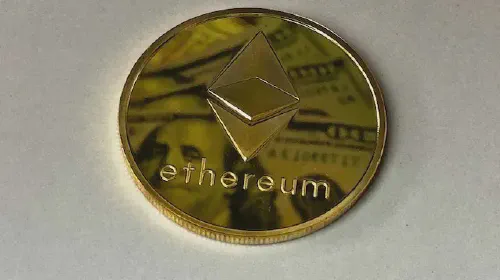Top Alternative Cryptocurrency Projects to Mine After Ethereum 2.0 Merge
Salomon Kisters
Jun 5, 2023This post may contain affiliate links. If you use these links to buy something we may earn a commission. Thanks!
Ethereum 2.0 is a major upgrade to the Ethereum blockchain that aims to address some of the scalability, security, and sustainability issues faced by the current Ethereum network. The Ethereum 2.0 merge, also known as the “Merge”, is the final step in this transition.
It involves combining the existing Ethereum mainnet with the Ethereum 2.0 beacon chain, which has already been launched. This will result in a single Ethereum network that operates entirely on the PoS consensus mechanism.
Even during the ongoing bear market, a lot has been happening in the cryptocurrency industry. Anyone even mildly interested in the cryptocurrency space must be aware of the Ethereum 2.0 merge, which took place in September 2022.
As a result of the Ethereum 2.0 merge, the Ethereum blockchain has completed its shift from the Proof-of-Work (PoW) mechanism to the Proof-of-Sake (PoS) mechanism. Consequently, the platform no longer needs miners to validate its transactions.
Subsequently, new people stepping into the mining industry, as well as most of the old players, have been confused about which project to jump to ever since the merge. This article will list and discuss some of the most popular alternative cryptocurrency projects to mine with your GPU rigs.
What is GPU Mining?
GPU mining is the most popular mining technique in the cryptocurrency space and is based on using graphics processing units to solve complex mathematical problems. Prior to GPU mining, CPU mining was the dominant mining technique, which, as the name suggests, involved using only the computer’s processing unit to solve these problems.
As the competition in the crypto mining space grew and more people began mining various cryptocurrencies, the complexity of the mathematical problems increased accordingly. Hence, miners gradually shifted to GPUs for mining due to their enhanced ability to process a large number of algorithmic calculations in a comparatively shorter time frame.
The procedure usually involves setting up a computer system with multiple graphics cards and then using specialized mining software, such as CGMiner, RapidMiner, and NiceHash, to connect to the mining pool or the blockchain networks.
These software applications use the GPU’s power to solve mathematical calculations to validate transactions on the blockchain. Once a block of transactions is complete, the miner is rewarded with some newly minted tokens of the native cryptocurrency.
Ethereum 2.0 Merge
Ethereum 2.0 merge, also known as Serenity, is a fundamental upgrade to the Ethereum blockchain implemented back in September of 2022. This upgrade aims to improve the scalability and sustainability of the overall network. The most significant change executed through this upgrade is Ethereum’s shift from the PoW to the PoS model, replacing miners with validators.
Since its inception, Ethereum has relied on miners to process and validate transactions. But as the network expanded, it started facing issues like low speed and high transaction fees. For the longest time, Ethereum was stuck with the transaction speed of 30 tps, and gas fees got as high as $60 during high-traffic hours.
Not only does the merge address all these issues but it also improves the platform’s security by eliminating numerous threats such as 51% attacks and reduces energy consumption by 99.95%.
However, as mentioned before, the merge transferred the platform’s dependability from miners to validators. And considering that Ethereum has been the most profitable cryptocurrency for miners over the years, it is no wonder that this upgrade massively disturbed the mining industry. It left Ethereum miners with idle hardware worth more than $4 billion.
Fortunately, Ethereum 2.0 merge by no means suggests that the crypto-mining industry is coming to an end. Miners can use their existing GPU setup to mine other cryptocurrencies as well.
Other Cryptocurrencies to Mine after Ethereum 2.0 Merge
Following is a list of the most popular alternatives to Ethereum for miners. Before jumping in, it’s important to know that no other cryptocurrency in the market is as profitable as the pre-merge Ethereum as far as mining is concerned.
Ethereum Classic
Ethereum Classic (ETC) emerged as the primary alternative to Ethereum 2.0 following the merge. ETC was created through a hard fork in 2016 after the infamous DAO hack incident. The hard fork took place as a result of the disagreement within the Ethereum community regarding reversing the transactions made by the attacker.
The supporters of the proposition created a new version of the blockchain, i.e., Ethereum, while the older blockchain continued as Ethereum Classic. The underlying technology of both platforms is identical. However, Ethereum Classic still uses the Proof-of-Work mechanism for processing transactions. Hence, it’s easier for Ethereum miners to jump to Ethereum Classic instead of joining a different blockchain network altogether.
Nevertheless, one must know that Ethereum Classic can support only a fraction of mining compared to the Ethereum blockchain before driving the profitability to the ground. This is due to its lower hashrate, which is about 1/30th of that of Ethereum. Moreover, in 2021, Ethereum Classic miners netted only $318 million, compared to Ethereum’s $18.4 billion.
EthereumPoW or ETHW
With the Ethereum 2.0 merge, a new Ethereum blockchain – EthereumPoW or ETHW – emerged as the PoW alternate to the (now) PoS Ethereum blockchain. It was created through a hard fork with the objective of maintaining the Proof-of-Work mining mechanism in the Ethereum ecosystem.
Interestingly, the development of ETHW is led by the same person who led the Ethereum Classic fork, i.e., Chandler Guo. Guo is a Chinese miner who opposes Ethereum’s shift from the PoW consensus mechanism to PoS. As one would expect, the underlying framework of ETHW is exactly the same as that of pre-merge Ethereum’s original blockchain. It uses the same gas fee model and mining approach to operate.
As far as the future of the project is concerned, it is still too early to say if ETHW can survive and thrive for the long term. However, some big crypto trading platforms, such as Crypto.com and Binance, have already listed ETHW on their exchanges, where you can trade the cryptocurrency. Moreover, it is important to note that, like Ethereum Classic, EthereumPoW is not developed or managed by the Ethereum Foundation.
Neoxa
Neoxa is one of the newer projects in the cryptocurrency space today. It aims to bring the decentralization of cryptocurrencies and gaming together to provide a secure and rich experience to gamers, developers, and miners alike.
Since the Neoxa blockchain is based on the Proof-of-Work consensus mechanism, many GPU miners consider it a good alternative to Ethereum. The platform uses the KawPow mining algorithm, originally introduced by RVN.
Despite being new to the industry, Neoxa is already a popular option in the crypto-mining space, with more than 40 mining pools. The cryptocurrency can be mined using AMD and Nvidia GPUs both. Popular miners for the project include teamredminer, gminer, and nbminer.
Ravencoin
Ravencoin is a fairly established cryptocurrency project in the industry. It was created as a code fork of Bitcoin in 2018 to facilitate the transfer of assets, such as stocks, gold, real estate, and intellectual property using the decentralized blockchain network.
Ravencoin was the first cryptocurrency to use the KawPow mining algorithm. KawPow is a unique mining approach designed specifically to minimize the risk of centralization of mining due to the use of ASIC hardware. The RVN token can be mined by AMD and Nvidia GPUs.
Considering the project’s previous success and popularity in the crypto-mining industry, it’s safe to say that Ravencoin is among the top contenders for miners after the Ethereum 2.0 merge.
Æternity
Launched in 2017, Æternity is another PoW blockchain project that emerged as one of the most popular options among miners after the Ethereum 2.0 merge. At the time, it was created to overcome the inefficiencies of crypto platforms for high-bandwidth transactions, functional smart contracts, and decentralized oracles.
Æternity uses the Cuckoo Cycle algorithm for mining. You can set up a mining rig for AE tokens using either AMD or Nvidia GPU. Two of the most popular miners for the project are lolminer and gminer. Experts believe that Æternity is headed toward the DeFi space, targeting applications like that of the Ethereum network.
Ergo
Ergo first attracted attention in the mining community when it started offering better mining returns even when compared to the pre-merge Ethereum. Hence, when Ethereum 2.0 shifted from the PoW model to PoS, it appeared as a lucrative option.
Ergo was created in order to offer an efficient and secure way to facilitate financial contracts for the long run. The project uses the Autolykos2 mining algorithm and claims to be resistant to centralization in mining. It does not support ASIC hardware, which means GPU miners can have a profitable mining experience.
The best ERG miners for Nvidia include gminer, t-rex, and lolminer. Moreover, it can also be mined using AMD GPUs, teamredminer,and lolminer.
Conclusion
The Ethereum 2.0 merge dealt a significant blow to the crypto-mining industry, as a major portion of GPU miners was associated with the Ethereum network.
With Ethereum abandoning the PoW mining mechanism, several blockchain networks have emerged as alternate options for GPU miners. However, it is safe to say that none of them are close to reaching the potential of the Ethereum netwo
Stay informed with the latest insights in Crypto, Blockchain, and Cyber-Security! Subscribe to our newsletter now to receive exclusive updates, expert analyses, and current developments directly to your inbox. Don't miss the opportunity to expand your knowledge and stay up-to-date.
Love what you're reading? Subscribe for top stories in Crypto, Blockchain, and Cyber-Security. Stay informed with exclusive updates.
Please note that the Content may have been generated with the Help of AI. The editorial content of OriginStamp AG does not constitute a recommendation for investment or purchase advice. In principle, an investment can also lead to a total loss. Therefore, please seek advice before making an investment decision.

How Do Ethereum Nodes Communicate?
Ethereum nodes are vital components of the Ethereum network. But how do they communicate?

What Is the Ethereum London Hard Fork and How Does It Impact Token Holders?
The Ethereum London Hard Fork is one of the most significant changes made to the Ethereum blockchain. Here is everything you need to know if you're holding Ethereum.

How Do Ethereum Developers Make Money?
Ethereum developers get paid handsomely for their work, despite the project being Open Source. And there are several ways they make money. Read onwards to learn more about how they do this.
Protect your documents
Your gateway to unforgeable data. Imprint the authenticity of your information with our blockchain timestamp